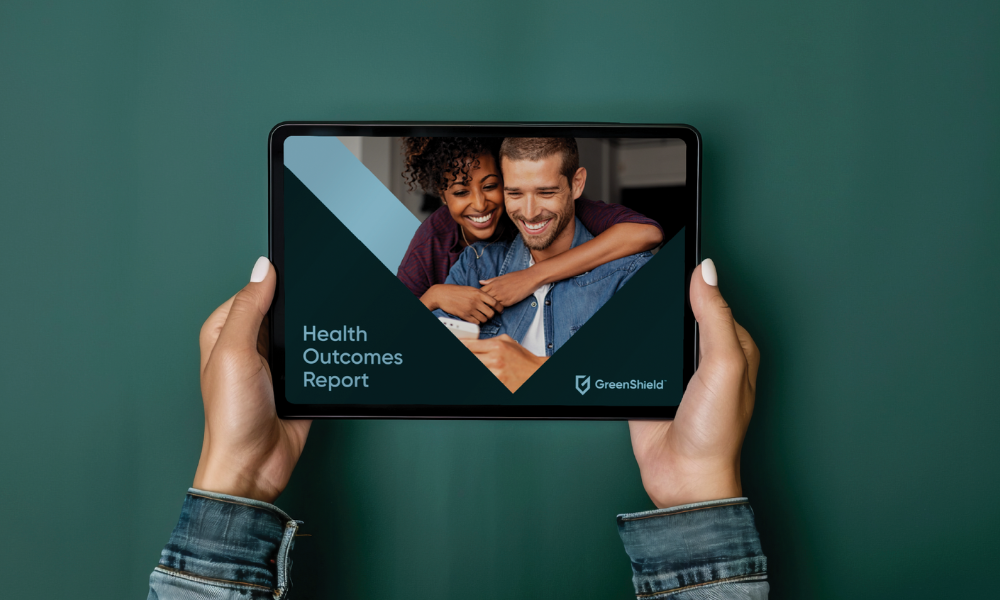Mental health claims increased by 132 per cent while chronic disease-related drug claims increased 14 per cent, GreenShield says

Canadian employees continue to face barriers to access health care while health costs to employers rise. This is one of the major findings according to GreenShield’s inaugural Health Outcomes Report, which also found a distinct need for better digital health solutions in the workplace.
Joe Blomeley, executive vice-president and head of health services and enterprise growth at GreenShield, highlighted that since the onset of the pandemic, GreenShield has found a 132 per cent increase in mental health claims and a 14 per cent rise in chronic disease related drug claims for Canadians.
“During the pandemic, we said that there would potentially be a secondary pandemic and that there'll be a rise in mental health challenges. Well, it is now playing out,” Blomeley asserts. “Our biggest increase in terms of claims in claimants since the pandemic is mental health. We’re seeing chronic diseases, like diabetes, heart conditions, even weight management programs, jump quite aggressively as well.”
Other key highlights from GreenShield’s report, Blomeley noted, are younger generations and individuals who identify as women are showing a strong appetite for digital care, with Gen Z and millennials aged 25 to 34 leading adoption for mental health and telemedicine services. Ninety per cent of GreenShield’s EAP users chose to access virtual appointments last year, while more than seventy-five per cent of users typically want in-person or telephone appointments.
“It also drives home that we've improved reducing the stigma, but we still have an issue with men. Men are not reaching out for help, both in terms of mental health and telemedicine services to the same extent as women. I think more effort needs to go into finding ways to encourage men to seek help,” Blomeley highlighted.
“If you look at EAP or I-CBT statistics going back 10 to 15 years, women have always been the significant utilizer of these services than men. Men simply feel uncomfortable coming forward and seeking support,” Blomeley added. “I think where the stigma still exists with men is when we were younger, we were told to ‘suck it up’ at times and ‘to be more resilient’. Men take that with them into adulthood, and as a result, tend to be less willing to use these services than women.”
One of the ways GreenShield is trying to break the stigma is with their First Step program, hosted by Michael Landsberg. “We think having him talk to individuals about their willingness to bust through the stigma and find support will hopefully encourage men to do so as well,” said Blomeley.
What’s the solution?
Blomeley thinks utilization of mental health services will continue to rise. Companies that encourage utilization will ultimately be successful, he says, as opposed to those who are trying to suppress it.
“What employers can be doing is making sure they have a coherent strategy in terms of supporting employee health and employee mental health. In that strategy, make sure it includes measuring a return on investment (ROI). Are the services you're providing to your employees resulting in a meaningful impact?”
“Make sure when you're selecting providers that health outcomes are at the centre of what that provider is doing. There's a variety of programs out there, some of them don't work. And if somebody can't prove to you that it works at reduces symptomology and that it results in better health outcomes, don't waste your time paying for it. It will just confuse your employees.”
Not only is offering comprehensive health support good for employees, but it’s also good for business too. The report highlighted a 2019 report from Deloitte revealed that companies in Canada which invested in employee mental health programs for at least a year experienced a median annual ROI of $1.62 for every dollar they spent, while organizations that had similar programs in place for three or more years enjoyed a median annual ROI of $2.18 for every dollar invested.
Blomeley explained the launch of the report has been four years in the making, after GreenShield decided to broaden their scope from strictly mental health services to include healthcare.
“We saw an opportunity to grow in healthcare and it also took us back to our roots,” Blomeley explains. “Our company was founded by a pharmacist with the goal of improving health care across Canada. With GreenShield Care, our social impact arm, we really wanted to be able to not just cut checks and support other organizations, but find ways to deliver the care ourselves, especially for those in at-risk communities.”
This prompted GreenShield to launch GreenShield Health last year which provides the company “a very unique opportunity” to not just look at their claims and PBM data, but to also match those up with what GreenShield is seeing on the healthcare side, like health outcomes, how they reduce symptomology and the type of care that's being utilized, Blomeley added.
“If we don't have a clear solution and a clear, coherent strategy around supporting mental health care and broader health care, we're going to run into problems,” Blomeley said.



